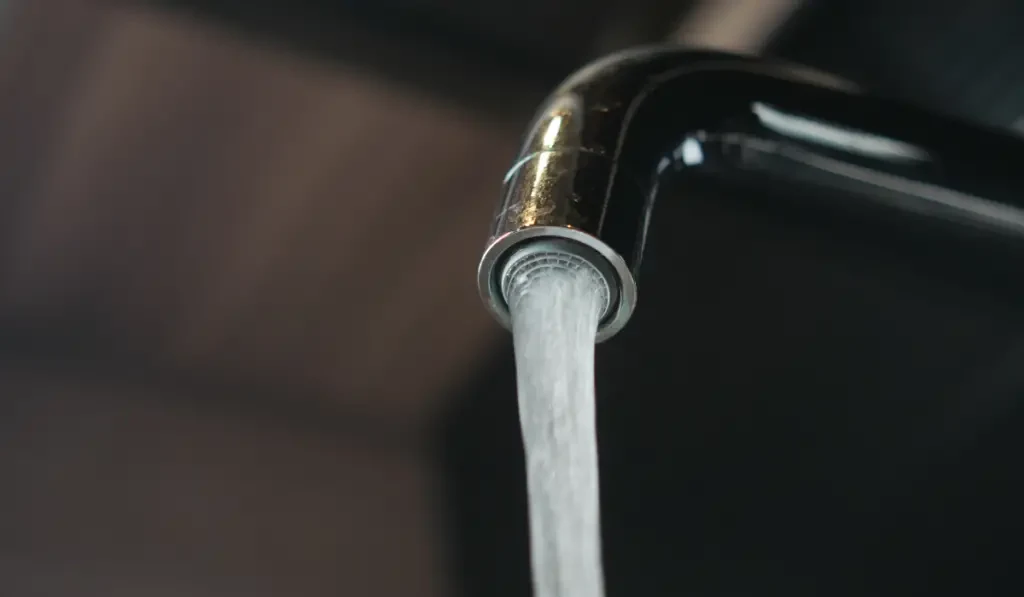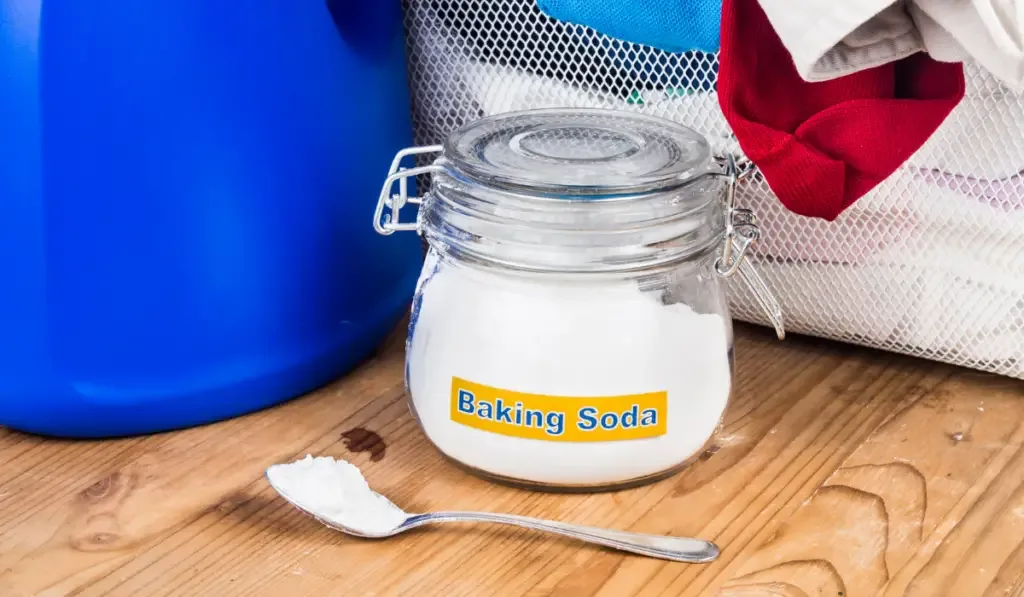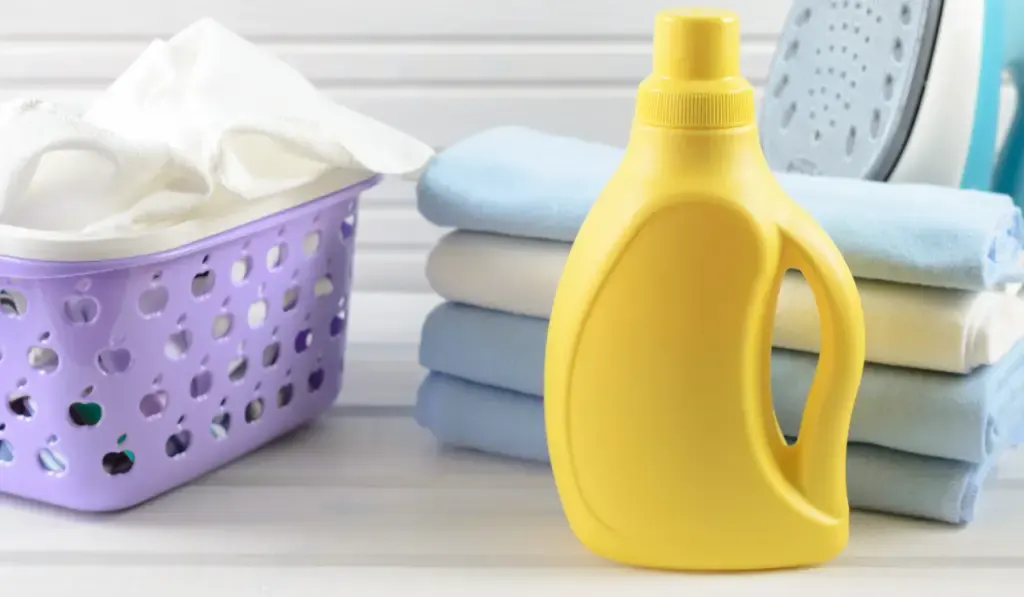Fabric softener is a commonly used laundry product and provides a pleasant scent and softness to our clothes. However, fabric softener residue can sometimes accumulate on garments, creating stains.
As seasoned fabric care experts, we understand the frustration of fabric softener stains on your favorite clothes.
From simple household ingredients to specialized stain removers, we provide practical solutions that anyone can use. This article shares six effective methods to remove fabric softener stains and restore your garments to their original condition.
Read on to uncover the secrets of successful stain removal.
1. Rinse with Water

You can use plain water to remove very light fabric softener stains from your clothes. But it is essential to know the type of water your garment needs.
Check the clothes tag to know which kind of water to use and follow that to avoid distorting your fabric.
When it comes to fabric softener stains, time is of the essence, and acting immediately improves your chances of completely removing the stain.
As soon as you notice the mishap, don’t waste a second and grab that stained garment.
Head straight to your sink and hold the stained area under cold running water. The low temperature helps prevent the stain from setting in deeper, giving you a better shot at removing it completely.
Once you’ve rinsed the stained area thoroughly, gently blot it with a clean towel or cloth. Pat the fabric softly, removing any excess moisture.
Be careful not to rub the fabric too vigorously, as it may spread the stain or damage the fibers.
If the stain persists after the initial rinse and blotting, repeat steps 2 and 3 until you see some improvement.
2. Apply Dishwashing Liquid
Dishwashing liquid can be a useful ally in the battle against fabric softener stains.
First, place a small amount of dishwashing liquid directly onto the stained area. Ensure it covers the fabric softener stain.
Rub the fabric together to create a lather with the dishwashing liquid. Gently massage the stained area to help loosen and remove the fabric softener residue.
Launder the garment as you normally would, following the care instructions provided.
3. Use Detergent

For fresh fabric softener stains, using detergent can effectively remove the greasy residue.
Apply a small amount of liquid laundry detergent to the stained area and gently rub it into the fabric.
Let it sit for a few minutes before laundering the garment as usual. Check the care label on the clothing item to determine the appropriate washing temperature.
Recommended detergents for fabrics include:
- Loni Bio Laundry Detergent
- Fast Orange Grease X Mechanic’s Laundry Detergent
- Persil ProClean Liquid Laundry Detergent
- Tide® Hygienic Clean Heavy Duty Liquid Laundry Detergent
4. Pre-treat with Vinegar
Vinegar is a versatile household ingredient that can effectively remove fabric softener stains. Its acidic properties can help neutralize fabric softener residues.
In a spray bottle, mix equal parts white vinegar and water. Shake the bottle to ensure thorough mixing.
Spray the diluted vinegar onto the fabric softener stain, ensuring the affected area is saturated. Allow it to sit for a few minutes to break down the stain.
For best results, only wash the stained cloth to allow the vinegar to penetrate and break down the stain.
Take note that white clothes call for a different approach. For effective results, pour white vinegar on the pigment and gently rub until it dissolves into it.
Then wash the garment under a normal cycle with the vinegar applied to the residue.
Tip: White vinegar causes discoloration in clothes. To prevent fading, start the machine immediately after adding the fabric.
5. Baking Soda Paste

Baking soda is known for its stain-fighting properties and can help remove fabric softener stains.
This natural stain remover targets strong stains like grease and oil. It also removes softener residues from clothes.
To begin, prepare a thick paste by blending baking soda and water. Spread the paste on the stained area with a gentle rub and let it settle for 15-20 minutes.
Wash it off with your preferred detergent, rinse, remove the excess water, and then dry.
Tip: Based on how stubborn the stain is, you can leave the paste to sit for more than 15 to 20 minutes or overnight.
6. Use of Ammonia
Ammonia’s alkalinity makes it an excellent laundry stain remover. It can break through grease and other organic substances like household dirt.
Take adequate dish soap, clear ammonia, and baking soda, and mix with warm water. Apply a generous amount of the combo with a sponge or spray bottle to the stain area.
Let it settle for 30 minutes, then wash your clothes as usual.
Here are some safety precautions you can use when applying ammonia:
- Avoid using ammonia on wool or silk apparel, as it can damage these delicate fabrics.
- Ensure there is enough ventilation when handling ammonia.
- Never mix ammonia with bleach or any laundry product that contains bleach. Blending these two products produces toxic fumes.
- Avoid direct skin contact with ammonia. Use gloves to avoid its effects on you, like burns, pain, etc.

FAQ
To remove fabric softener stains from clothes, blot the stain with a clean cloth soaked in vinegar (note the difference for white items using white vinegar). Then, wash the garment, as usual, using a laundry detergent.
It is recommended to check the garment’s care label and conduct a patch test before attempting stain removal.
Fabric softener stains look greasy and blue-gray. The stains result from undiluted fabric softener contacting the fabric.
Excessive use of the product in the dryer can also cause stains. It is important to follow proper laundering instructions and avoid overusing fabric softeners to minimize the risk of these stains.
To stop fabric softener stains on your clothes, consider these steps:
Dilute fabric softener with water before use and ensure proper mixing
Add fabric softener to the dispenser or final rinse cycle
Avoid pouring directly onto clothes
Use appropriate fabric softener for the type of fabric
Additionally, regularly clean the dispenser and machine to prevent the buildup and transfer of softener residue
Final Thoughts: Winning the Stain Game
Fabric softener stains on clothes can be frustrating. But by reading the cleaning product’s label guidelines, you can restore your garments to their pristine condition.
Safety precautions when handling cleaning products are essential. Remember to read fabric softener labels, dilute properly, and follow the instructions provided to prevent stains from occurring.
Experiment with these methods to find the best one for you. Stop the softener stains and enjoy fresh, revitalized clothes again.
Resources
- https://lonilabs.com/
- https://www.amazon.com/Permatex-22340-Mechanics-Laundry-Detergent/dp/B01KE1VYOK
- https://www.amazon.com/Persil-ProClean-Power-Liquid-Detergent-Original/dp/B00VKBFNKU
- https://www.amazon.com/Tide-Hygienic-Detergent-Original-Compatible/dp/B08QBV9DJ5
- https://lndry.com/five-surprising-benefits-of-adding-vinegar-to-your-laundry-routine/
- https://www.hunker.com/13412450/how-to-remove-detergent-stains
- https://www.tru.earth/Baking-Soda-as-a-Stain-Remover
- https://www.chemicalsafetyfacts.org/chemicals/ammonia/
- https://www.thespruce.com/remove-softener-and-dryer-sheet-stains-2146656
